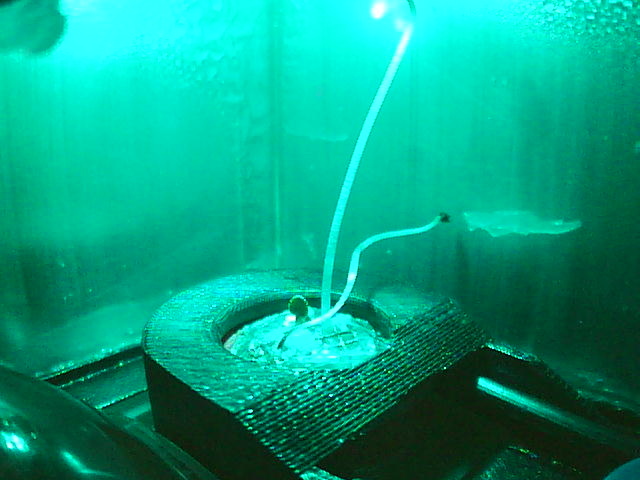An Interview with Matt Brown- NASA HUNCH Educator
A DreamUp project of over four years in the making is Lakewood High School and Warren Tech’s Hydrofuge: A Personal Plant Growth Chamber. Warren Tech is a school in the national program HUNCH (High Schools United with NASA to Create Hardware) and they have designed many projects actually used in low-earth orbit.
Just arriving to the ISS last week and plugged in Saturday, the experiment is already making files in the form of photos, which the students are able to view online.
Student comments from the launch site include:
“This is really amazing!”
“Yeeeeaaaahhh! Go Hydrofuge!”
“Holy cow, those plants are huge!”
“This whole thing is so cool!”
“I wonder why the seeds grew so much and the seedling didn’t grow as much?”
And from their teacher Matt Brown: “They have already started to look at what is happening and tried to figure out why. Some of them are redesigning and trying to improve upon things that they see in the pictures. I would say that the general feeling is one of extreme excitement and pride in the work that they’ve done. I think that seeing the first pictures kind of brought it all home to each of them and the realization that they have an experiment in space aboard the ISS is setting in. The pride, ownership, excitement, and humility that these students have experienced has changed their lives.”
Matt is quick to point out that the work is 100% student-driven and that he simply coordinates their efforts. Curious about how he manages such an innovative group, I asked Matt recently about his philosophy on driving creativity in the classroom.
What is the creative design process like?
Directed chaos. It can appear to be messy and unorganized, at least from the outside looking in. Students should have a firm grasp on the design process to be successful and have a willingness to take risk and fail. A fear of failure will severely limit the depth at which students work and will cause them to settle on the first idea that pops into their mind. This is rarely the best solution available. Solutions should be researched and vetted against the criteria and constraints of the project. Only the ideas that best meet the criteria and constraints of the project should be built and tested.
What spurs student creativity?
Several things spur student creativity. I think a combination of confidence in the knowledge and the skills that they bring to the project, that the project challenges them and pushes them into new areas, and knowing that there are real rewards and consequences in the end. Completing theoretical projects that they know lack these things present little incentive for them to do anymore than they need to obtain a letter grade for the project. Rarely do grades come up in the HUNCH class like they do in all my others. It turns from “What do I need to do to earn an A” to “What do I need to do to solve the problem presented by NASA”.
Are today’s students comfortable with the trial-and-error process?
I have found that students come to my class totally unprepared for trial and error. They are petrified of failure because they have been taught that failure is bad and that you have to get the correct answer on the first try. We all know this is unrealistic and not at all the way things work in real life, especially in the fields of engineering and design. I spend a lot of time giving students the chance to fail, and promote the idea “Fail often to succeed sooner”. Once students realize that they can learn from mistakes and that failure often leads to a better solution, they begin to gain confidence in themselves and their abilities.
How do you facilitate having all students give their input and being heard?
By keeping teams small. As I mentioned earlier, having multiple project available for students to work on allows me to keep teams at around 5 or so students. I try to gauge that number by the scope and complexity of the project. Sometimes you can break a large project into smaller teams. Teams then compete for the one spot aboard the zero G flight. Teams present to a panel of experts (like the one you helped me with last fall) and the panel scores their project on several criteria.
In today’s world which is more important-computer knowledge, hands-on work, or a mix of both?
I think it is more important to have a mixture of both. I require students to rotate “jobs” within the team so that they gain experience in all areas of the project. Once you’ve done that a few times, they will begin to do it on their own. Students are more likely to jump in and do what needs to be done if they are comfortable working in all areas of the project. This also applies in the working world. You are sometimes asked to do something that is not in your field of expertise. The more you know how to do, the better off you are. Having skills in only one area or the other will limit your ability to complete the entire design process effectively.

